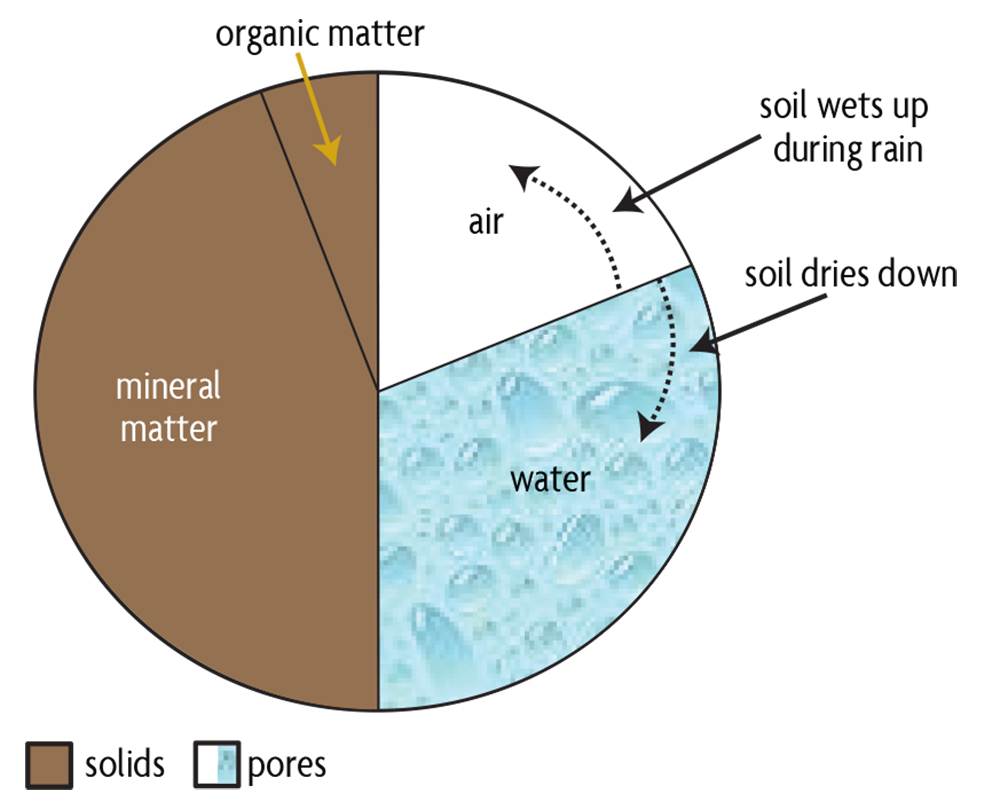Word Describing Soil or Rock Through Which Water Can Pass
The hydraulic conductivity symbol is K. Layers with few or no pores.

Vocabulary Mats My Favorite Science Study Strategy Tarheelstate Teacher Science Vocabulary Science Vocabulary Activities Vocabulary Strategies
Everyone knows Bone Gap is full of gapsgaps to trip you up gaps to slide through so you can disappear forever.

. Pits Sclerenchyma cells that are about as long as they are wide are called _________. Thats a behemoth sized lion. There are two other terms that are used with water.
A heterogeneous body of introduced permeable and less permeable material that acts as a water-yielding hydraulic unit of regional extent. 1 something of monstrous size. Permeability is the ease with which air and water may pass through the soil.
The ease with which water flows through an aquifer is affected by many factors including porosity and permeability. Based soils the water will tend to cling to the material and not pass through it easily or quickly. What is underground water.
Some water that passes through rock sticks to particles forming a film of water. An underground layer of rock sediment or soil that is filled or saturated with water aquifer system. Permeability means how easily that water can travel through substances.
2 Clay soil is composed of very hard particles. 1 a dark volcanic rock that displays a columnar structure and made of fine-grained. If the spaces are large such as in the gravel the water passes through quickly.
The symbol used to represent Hydraulic permeability is P. Clay soil is a soil that has at least a 25-percent consistency of clay. Percolation the downward movement of water from the land surface into soil or.
Gravel that holds water. Water found below earths surface. Hydraulic conductivity is the flow of water in a porous medium.
1 a person who is socially unconventional in a way regarded as characteristic of creative artists. A body of rock or sediment in which large amounts of water can flow and be stored is called an aquifer. It may be called a col notch pass saddle water gap or wind gap and geomorphologically are most often carved by water erosion from a freshet stream or a river.
Why does water move very slowly downward through clay soil. Aquifer is the name given to underground soil or rock through which ground water can easily move. Clay also forms spaces between the particles so holds nutrients and water in much better than sandy soil.
Percolation--1 The movement of water through the openings in rock or soil. They crumble quicker than hard rocks. Underground water is usually moved through aquifers.
This process is called capillary rise. Most plants require a steady supply of water and it is obtained from the soil. While plants need water they also need air in the root zone.
Porous soil or rock that holds groundwater and is sufficiently permeable to yield significant volumes of water. AtmometerEvaporimeter A scientific instrument used for measuring the rate of evaporation from a wet surface to the atmosphere. Sponge like formations of rock sand.
The amount of spaces is the porosity. 4 Clay soil has very small particles. This type of soil is high in nutrients and is ideal for gardening or farming.
1 Clay soil is composed of low-density minerals. Water can pass through a sandstone sample because the sample is 1 permeable 2 organic in origin. Permeability is the amount of water that can pass through a porous material.
3 Clay soil has large pore spaces. It is possible for a material to be highly porous but not permeable EX. Rocks that have lots of spaces that hold water or through which water can pass are called porous rocks.
Water-holding capacity is the ability of a soil to retain water. Permeability --the ability of a material to allow the passage of a liquid such as water through rocks. Grain size goes up permeability goes up EX.
The fertile soil was made of decomposed basalt. 2 the entrance of a portion of the streamflow into the channel materials to contribute to groundwater replenishment. The groundwater can be sucked upward by the soil through very small pores that are called capillars.
Aquaducts are channels or pipes through which water can pass. In earth science erosion is the action of surface processes such as water flow or wind that removes soil rock or dissolved material from one location on the Earths crust and then transports it to another location not to be confused with. In fine textured soil clay the upward movement of water is slow but covers a long distance.
This is used to refer to the ability of water or gases to pass through a material such as rocks. Permeability is the rate at which fluid can move through the soil. This is the type of water that can be gotten through cracks or through the soil and rocks.
Rocks with rounded or fine grains often have spaces that hold moisture and tend to be softer. Includes all of the land area that supplies water to a particular river system. Water can flow from tracheid to tracheid because wherever two tracheids come in contact with one another they usually form pairs of lateral _____ through which water can pass.
The amount of ground water that can flow through soil or rock depends on the size of the spaces in the soil or rock and how well the spaces are connected. Layers containing spaces or pores through water can pass. For water to flow freely through an aquifer the pores or fractures in the aquifer must be connected.
The rate water or other liquids pass through the pore spaces of a rock.

Prek Presteam Numeracy Collection Steamvestigation Download Numeracy Months In A Year Mathematics

0 Response to "Word Describing Soil or Rock Through Which Water Can Pass"
Post a Comment